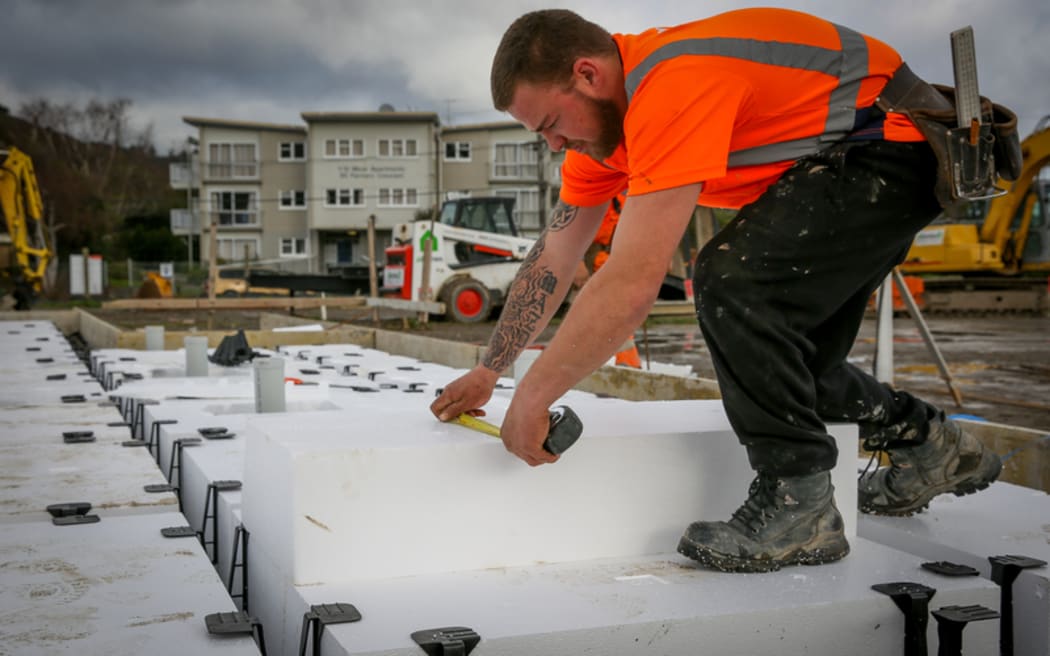The number of consents to build new houses and apartments has rebounded, led by Auckland.

Photo: RNZ / Alexander Robertson
Official figures show permits jumped a seasonally adjusted 10.8 percent in February, reversing a 7.8 percent decline in the previous month.
The fall in January had some analysts worried the house building market, particularly in the under-supplied Auckland region, was running out of steam.
February's sharp rebound should ease those fears.
Statistics New Zealand business indicators manager Clara Eatherley said the increase was led by Auckland, with other strong increases in Waikato, Bay of Plenty and Otago.
"Dwelling consents in Canterbury showed little change from the previous February," she said.
In actual terms, a total of 2379 new dwellings were consented in February - the highest number for that month since 2004, and up 35 percent from the same month in 2015.
The trend is now at its highest level since mid-2004.
On an annual basis, economists have calculated consents would have totalled more than 27,600. In Auckland, there would have been about 9500 consents.
Westpac senior economist Michael Gordon said that in itself was not enough.
"It's on the way towards the numbers that the [Auckland] Council has been talking about. They're looking to get up to about 13,000, maybe by next year. We need to see that progressing.
"It gives us a bit of comfort that the building industry does have the capacity to meet that need for new homes," he said.
Construction activity is expected to underpin the economy for a while yet, but ANZ Bank has said rising funding costs for banks and an uncertain global outlook will slow domestic momentum.
That should prompt the Reserve Bank to act.
ANZ economist Mark Smith said cuts to the OCR were expected by the end of the year.
"We expect 50bps [basis points] of OCR cuts by the end of the year to hold the economy up and drive low inflation back to 2 percent."

